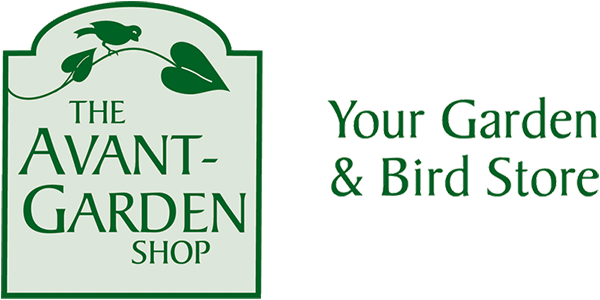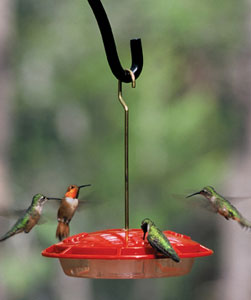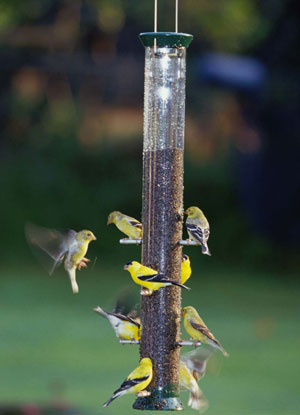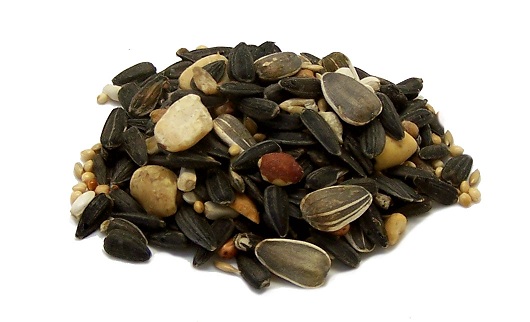 CHEX TV air date: Fri. Jan. 11th, 2013 Click here to watch this episode of?The Garden Gate. Episode 3 of The Garden Gate discussed the difference between big box store bird food and Mill Creek bird food, which we carry. Birds don’t like stale food any more than you do. Tune in to learn the difference! ?
CHEX TV air date: Fri. Jan. 11th, 2013 Click here to watch this episode of?The Garden Gate. Episode 3 of The Garden Gate discussed the difference between big box store bird food and Mill Creek bird food, which we carry. Birds don’t like stale food any more than you do. Tune in to learn the difference! ?
Galleries
Garden Gate: Episode 2 – Baffling squirrels
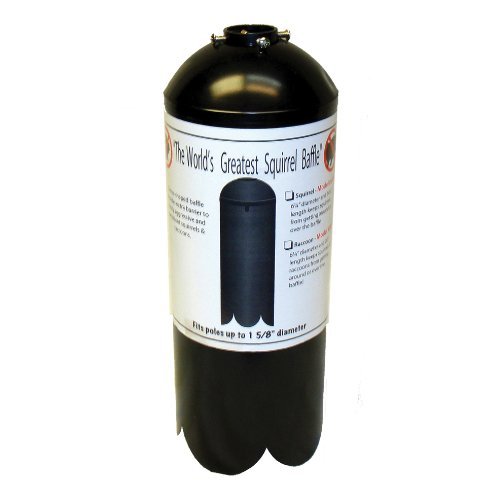 CHEX TV air date: Fri. Dec. 28th, 2012
CHEX TV air date: Fri. Dec. 28th, 2012
Click here to view this episode of?The Garden Gate.
This episode of The Garden Gate focused on different baffles that can be used to stop squirrels from getting to your bird feeders. If you already have bird feeders and don’t want to replace them with squirrel proof feeders, there are alternatives available.
Garden Gate: Episode 1 – Squirrel Buster Bird Feeders
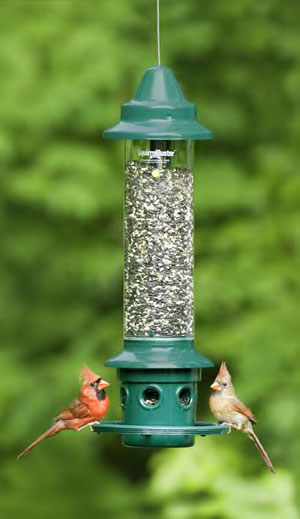 CHEX TV air date: Fri. Dec. 14th, 2012
CHEX TV air date: Fri. Dec. 14th, 2012
Click here to watch the FIRST episode of The Garden Gate.
Late in 2012 I began a short TV spot on The 5 o’clock show on CHEX TV.? The first episode was on Squirrel Proof Bird feeders. YES, they do exist!
I’ve had a great response so far and will continue with more episodes!? They will be on CHEX bi-weekly on Fridays and also available on my YouTube channel.
Fall Garden Clean-Up
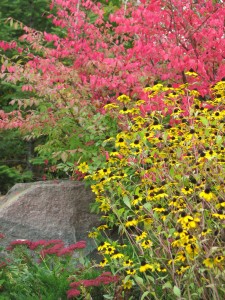 Every fall season as plants start to die off, people ask me should I cut down the dead material or not? Well the answer is “both!” Hostas and other soft leaved plant material should be cleaned up and removed. Also any diseased leaves should be removed and put out with your green waste collection or buried in the ground (don’t put diseased material in your compost pile.) The plants that should be left untrimmed include those such as Purple Cone Flower which provide seed for the birds in your garden. The stems also help to gather snow around their bases protecting them from the cold.
Every fall season as plants start to die off, people ask me should I cut down the dead material or not? Well the answer is “both!” Hostas and other soft leaved plant material should be cleaned up and removed. Also any diseased leaves should be removed and put out with your green waste collection or buried in the ground (don’t put diseased material in your compost pile.) The plants that should be left untrimmed include those such as Purple Cone Flower which provide seed for the birds in your garden. The stems also help to gather snow around their bases protecting them from the cold.
Remember to store or turn over your concrete planters and birdbaths before it gets too cold. Water sitting in these containers can freeze and cause cracking. Also don’t leave concrete sitting on stone or concrete for the winter. Water will get underneath these items and freeze also causing cracking and splitting.
Rake up leaves and save for covering up your perennials. Wait until there has been a good frost and then the leaves can be raked over the plants that need it most. Also keep a bag of leaves next to your compost pile so you can continue to compost throughout the winter. Every time you put food scraps in the compost pile place a layer of leaves on top. This will create a good carbon-nitrogen ratio to get your compost cooking come spring time!
Fall is also a great time to plant trees. Drop by The Ecology Park to find some beautiful native trees to enhance your outdoor living space. Since the trees have no leaves at this time of year, and it’s not hot out, they’ll adapt much better to their new surroundings than they would on a hot summer day.
And the most important thing of all – get out and enjoy the fall season, the colours and fresh air. It may be your last chance for a while.
Pruning Made Easy
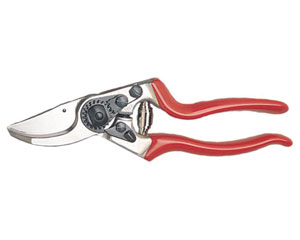 How many pruners do you have? Do you make the annual trek to one of the Big box stores each year and add another $10 pruner to your collection? There’s a reason why it only costs $10.00. Here the adage of “You get what you pay for” comes true.
How many pruners do you have? Do you make the annual trek to one of the Big box stores each year and add another $10 pruner to your collection? There’s a reason why it only costs $10.00. Here the adage of “You get what you pay for” comes true.
Pruners are tools that can either help you in the garden or hinder you. Choosing the right one will make a big difference in the long run.
Pruners need to be stainless steel so they don’t rust. A rusted tool cannot be repaired so ends up in the garbage. What a waste of money! Also ensure that the blade can be sharpened. Poor quality tools will get dull in no time and make your efforts more difficult.
The blades, springs and handle should all be replaceable. This way you can fix the tool rather than throw it away when something breaks. Ask questions next time you’re out buying a tool. Look for quality tools that will last and get your money’s worth!
The pruner should have a safety latch and you should be able to open it with your thumb. Two-handed pruning is inefficient.
Pruners should fit your hand comfortably and not cause rubbing or stress on your hands. You might be pruning for a few hours and working your hands hard so a comfortable fit is key to being able to end the day without pain.
It helps if your pruners are brightly coloured as well. Green pruners are likely to be lost in the garden very quickly. Look for red handles or wrap some bright tape around the handles so they’ll be easy to find.
There are two styles of pruners: anvil and bypass. The job that you’ll be doing with your pruners will determine the style of pruner you need. Anvil pruners have an upper cutting blade that comes down on a broad blunt blade, which crushes the wood leaving a ragged edge. The anvil pruner works best for dead wood or branches that have already been removed from the plant. The bypass pruner slices very close together with very little damage to your plants. The bypass pruner also allows you to cut very close to the plant eliminating long stubs on the plant. Because of the “clean” cut there is also less chance of disease entering the wound.
At The Avant-Garden Shop we have two lines of pruners, one for the beginner and one for the avid gardener. I prefer the “Felco” line of pruners- they will last for many years and meets all the suggested requirements listed above. My favourite is the Felco Ergonomic Pruner. These pruners are remarkably comfortable to use. They fit your hand well. They come for both right and left-handed gardeners. All of the working parts are easy to disassemble and clean, and the Teflon-coated blades are simple to sharpen or replace. Plus their handles are bright red-so you’re less likely to lose them!
Drop by the store or check out the selection of pruners available through our online shop. We’ll help you choose the pruner that best suits your needs.
Choosing the Right Glove for the Job
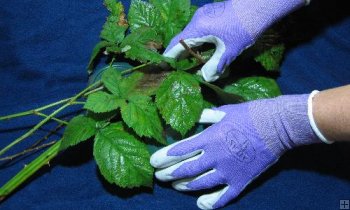 Are you like me? You get out in the garden all geared up to attack those weeds that have been annoying you for weeks. You grab some gloves that you found in the garage, they’re a bit big, but you think they’ll do the job. Then, after about two minutes off come the gloves? The fingers are too big and clumsy, the dirt is getting inside and they’re slipping off as you work. Frustration sets in. So you start working without gloves. Oh I’ll soak my hands later to get this ground in dirt off. Good luck!
Are you like me? You get out in the garden all geared up to attack those weeds that have been annoying you for weeks. You grab some gloves that you found in the garage, they’re a bit big, but you think they’ll do the job. Then, after about two minutes off come the gloves? The fingers are too big and clumsy, the dirt is getting inside and they’re slipping off as you work. Frustration sets in. So you start working without gloves. Oh I’ll soak my hands later to get this ground in dirt off. Good luck!
Not only is it bad for your skin, fingernails and cuticles to get them covered in dry dirt, but just think about what else might be lurking in the soil of your garden. Of course there are millions of good bacteria, but what about the neighbours cat? Does he visit your garden and leave little gifts for you? It is pretty disgusting when you put your hand into one of those treasures. Rusty nails, other garbage, thistles etc. these are all things that you can find in the garden amongst the weeds. Finding proper gloves that you’ll keep wearing are key to protecting your hands as well as your health.
When I tried the Miracle Workers gloves, I was amazed. These gloves are snug fitting and yet they breathe. I can easily get a grip on the weeds that I’m trying to pull. The cuffs are well fitted so I don’t get dirt falling inside the glove, and the backside is a fabric that breathes so your hands don’t get hot. Plus my fingernails stay clean! These are great gloves for the fidgety work that goes on in the garden. Miracle Workers are made of Nitrile, which is great for people with latex allergies and they’re washable!
If you’re going to be doing some shoveling, moving or picking rocks, or other tougher tasks then the Botanically Correct glove is the right one for the job. Similar to the Miracle Worker, but made with a tougher palm. These gloves are also breathable, have a tight cuff and provide a good grip for the task at hand. There is also a version of this called Tough Guys glove which is great in cool weather as it has a light lining of insulation. Men also like this glove for its durability.
Working in cold wet weather offers a whole new challenge. Whether it is working in a pond, washing the fall harvest with the garden hose or cleaning out the eaves the Best Gardening glove is the one for you. These gloves have an extra long cuff, they’re made from a waterproof fabric and are tough enough to protect you from rose and raspberry thorns. They’re even great for doing the dishes!
Please drop by The Avant-Garden Shop or visit our online shop to find your perfect glove. We’re here to help you make the right choice. All of our gloves are washable.
Hummingbird Tips
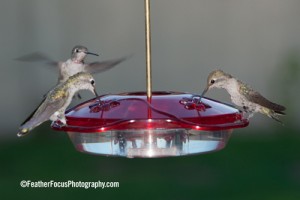 Besides nectar, Hummingbirds consume protein in the form of insects which they find inside flowers, on plants and in trees, in spider webs and in midair as they travel through your yard. Consider that when using pesticides in your yard and gardens. Hummers also drink water.
Besides nectar, Hummingbirds consume protein in the form of insects which they find inside flowers, on plants and in trees, in spider webs and in midair as they travel through your yard. Consider that when using pesticides in your yard and gardens. Hummers also drink water.
Hummers feed 5 – 8 times an hour.
Hummers have the greatest energy output, gram for gram, of any known warm-blooded animal. If your sugar water freezes, replace it immediately (even at dawn). They rely on established food supplies.
A Hummingbird’s wings can beat 200 times per second during courtship!
A Hummingbird’s tongue is roughly twice the length of its beak. It licks the nectar. (Approximately 13 licks per second!) You might see its beak and think that it can’t reach the nectar in the bottom of the feeder. Look closely with binoculars to see the tongue.
The Bee Hummingbird is the smallest hummingbird in the world at 2 inches long, weighing 1-15th of an ounce!
Under no circumstance should insecticides or other poisons be used at Hummingbird feeders.
By: Droll Yankees
Attracting Hummingbirds to your garden
Choosing a Hummingbird Feeder:? There are many varieties of hummingbird feeders available today. Most feeders are made of plastic or glass. If your birds seem to prefer one style feeder over another, it’s probably a simple matter of familiarity. If you change feeders, they may not feed immediately from the new one, but they will adapt; it may help to hang the old feeder, empty, next to the new one.
Any feeder can attract hummers, so perhaps the most important design feature to look for is ease of disassembling and cleaning. The basin-style feeders are much better than the inverted-bottle types. I recommend the Aspects HummZinger or the Droll Yankees Little Flyer for their durability as well as their ease of maintenance. Hummingbirds will come to any feeder that holds fresh syrup, so you might as well buy one that’s easy for you to keep up.
Location, Location, Location: Where to hang your feeder? A new one may be found sooner if hung over or near a garden of hummingbird plants. Hang a red scarf or flag until the hummer finds your feeder. You can hang them near windows, where you can watch and enjoy them.
Filling the Feeder: The sugar water we use to fill hummingbird feeders is only a supplement to the birds’ natural diet. Use only white sugar in hummingbird feeders at a ratio of 1 part sugar to 4 parts water. Premade mixes can also be purchased.? Many mixes often contain extra vitamins and make them more appealing and more nutritious for the hummers.? Heat until the sugar is dissolved. Allow to cool and fill your feeder. Store the excess syrup in the fridge for up to two weeks.
Please, do not put honey, Jell-O, brown sugar, fruit, or red food coloring in your feeder! Honey ferments rapidly when diluted with water and can kill hummingbirds. The effects of red dye have not been not scientifically tested, and it is not necessary to color the water to attract birds to your feeder.
Cleaning:Clean your feeder in hot water each time you refill and more thoroughly at least once a month.
Ants:Ensure your feeder has an ant moat to prevent problems with ants. Hummers will not drink from a feeder filled with dead ants.
Bees, Wasps, and Yellowjackets:These insects are attracted to the colour yellow. Look for feeders without yellow flowers. If they are a serious problem try moving your feeder or reducing the sugar ratio.
At The Avant-Garden Shop we have a wide variety of basin/saucer style feeders, with ant moats, nectar guards and BPA free plastic that won?t yellow or crack. They are leak proof and guaranteed for life! Drop by soon for a look and hopefully you?ll be able to enjoy these little gems!
Where are all of my finches?
If your thistle feeder is not as busy as normal, there could be one of a few things happening.
The finches have found natural food and are enjoying that source for the time being. They’ll be back once that source has been depleted.
Another reason they may be avoiding your feeder is stale or dried up seed. Drop by our store for some fresh seed and your finches, chickadees and their friends will return very quickly.
And a third reason the birds may not be at your feeder are blocked ports. Sometimes the seeds get jammed up around the tiny feeding port and the birds can’t reach the seeds. Out of frustration they go looking for a better source. Clean your feeder and refill or try giving the feeder a shake to dislodge the seeds.
Use one of Droll Yankees brand or the Aspects brand feeders for best results. Both brands now come with quick release bases making the feeders easy to clean and refill quickly. These great feeders will really impress your dinner guests. Both come with Lifetime Warranties.
Squirrel-Proofing Your Bird Feeder
Does this sound familiar? You’ve just filled your bird feeders and you’re successfully attracting a variety of songbirds to your backyard. But that’s not all you’re attracting: hordes of marauding squirrels are threatening to eat you, or at least the birds, out of house and home. With the price of birdseed these days, you can’t afford to feed those ravenous rodents, so what can you do to squirrel-proof your bird feeders?
?
The best way to discourage squirrels is to make it difficult for them to access your bird feeders. A very effective method is to protect the feeders with a baffle. Squirrels can climb smooth poles and run along narrow clotheslines, but they cannot get by a strategically placed baffle. A conical or tube-shaped baffle, which is positioned approximately four feet off the ground, can protect a feeder that is mounted on a pole. A feeder that hangs from a line or tree will benefit from a top-mount baffle. When using baffles, you should ensure that the feeder is positioned at least 12 feet away from walls, fences, and tree trunks to prevent the squirrels from jumping to the feeder.
?
Another effective strategy is to buy a bird feeder that has been designed to be squirrel-proof or, at least, squirrel-resistant. There are a couple of variations on this theme. One style has a feeder surrounded by a cage that allows small birds in, but keeps squirrels and large birds out. This style is great for small song birds such as chickadees, finches, siskins and red polls, but could prevent some desirable species, such as cardinals, from feeding.
?
A second style of squirrel-proof feeder is weight-sensitive. When something heavy, such as a squirrel or a large bird, lands on the feeder, its weight causes the feeding stations to close, thereby preventing the critter from feeding. There are a number of models on the market, some of which are more effective than others. One of the best is the Brome Squirrel Buster Plus, a bird feeder with features too numerous to mention (see photo). It comes with a lifetime factory warranty and is guaranteed squirrel-proof.
?
If you don’t want to upgrade your bird feeding equipment, you can try thwarting squirrels by using blends of birdseed that they find distasteful. One of the best is Squirrel FreeTM , packaged by Mill Creek, a firm located in Newmarket, Ontario. Through observation and experiment, the nature lovers at Mill Creek have been able to identify types of seed that squirrels will avoid, but which birds will still enjoy.
?
Finally, you can try keeping squirrels away from your bird feeders by distracting them. For example, you can install a box feeder filled with corn kernels or hang a corncob “trapper” for the squirrels to feed from. If your squirrels have their very own feeder, situated well away from any bird feeders, they may stick to their own turf and leave the birdseed alone.
?
There is no question that squirrels can be a nuisance around bird feeders and a costly one at that. However, keep in mind that squirrels are just being themselves. You shouldn’t let your desire to keep squirrels away from your bird feeders result in any harm to them. Don’t use poison or traps that will kill. Don’t use sticky material that can soil squirrel fur and bird feathers. Never add cayenne pepper to your birdseed (if a squirrel gets it in the eyes, the resulting misery and scratching may result in blindness).
?
Whatever you do, don’t give up on feeding the birds. Squirrels may be intelligent but, with careful thought, it’s not hard to foil them. After all, we’re smarter, right?
The Avant-Garden Shop is a retail store specializing in backyard birding supplies and gardening accessories. Visit them at 165 Sherbrooke St. in Peterborough, online at www.avantgardenshop.com, or contact them by phone at 705-743-0068 (toll-free 877-886-0869).
